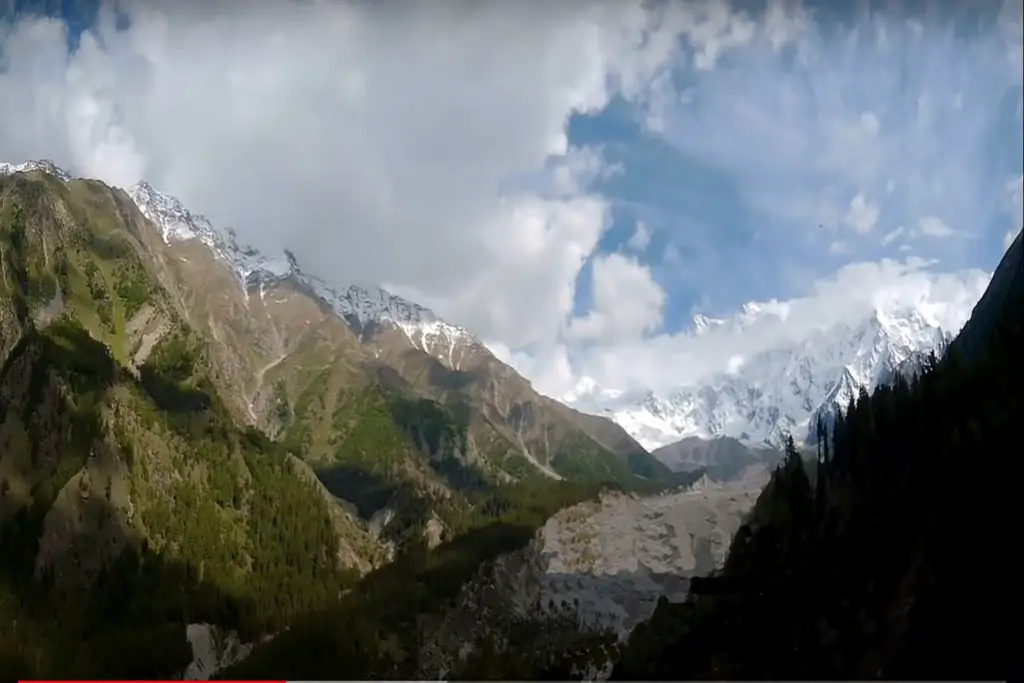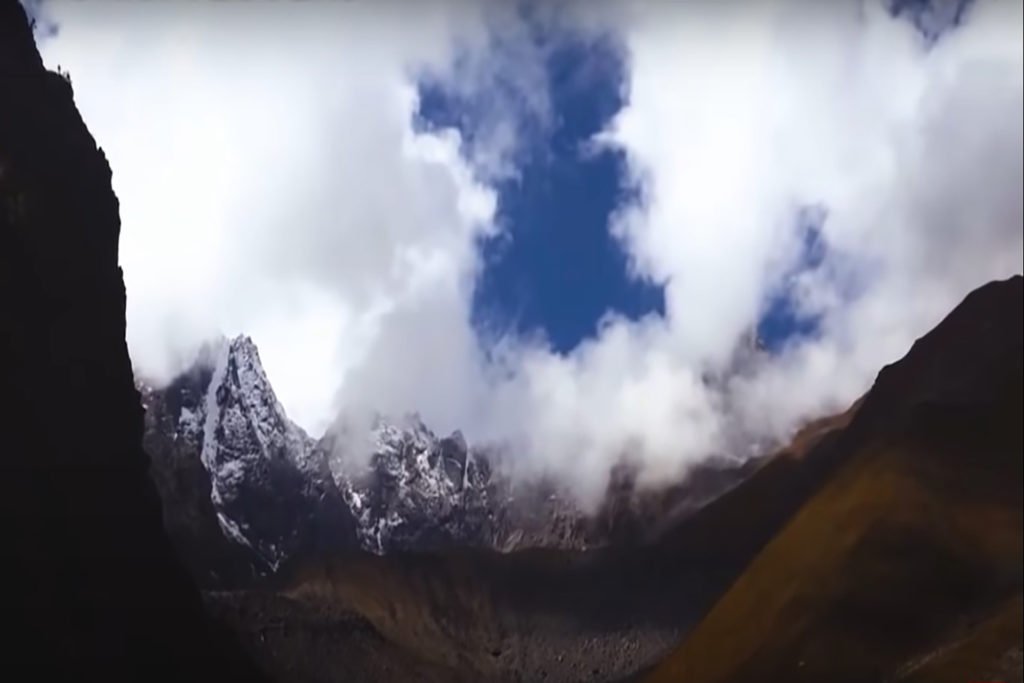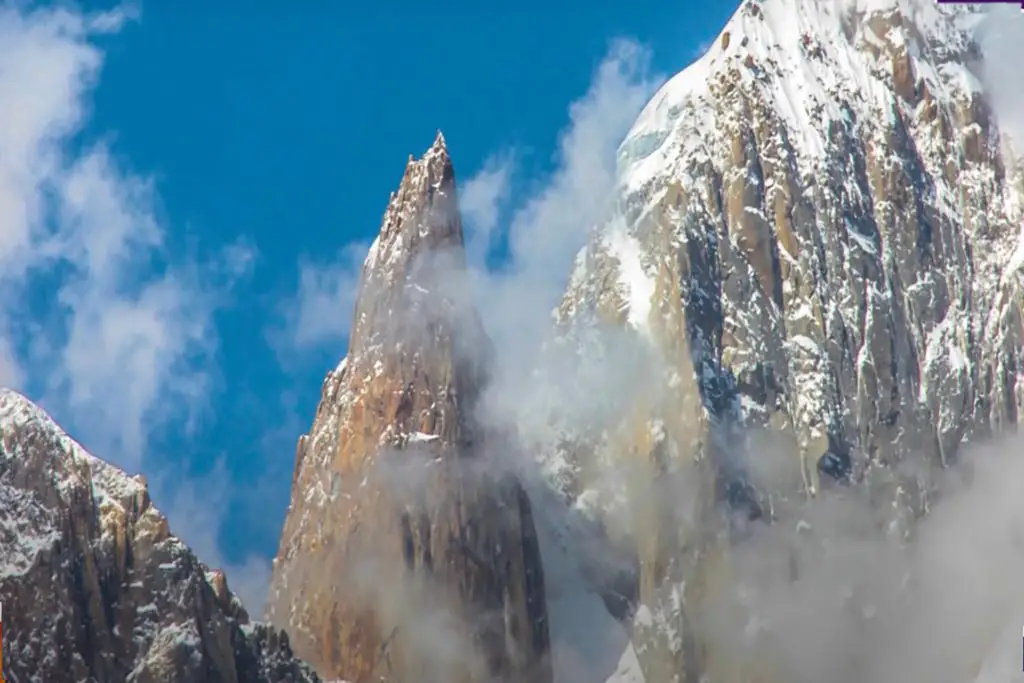Soaring above the wilderness of interior Alaska stands Mount Denali, the tallest mountain of North America. The majestic landmark, reaching an elevation of 20,310 feet, dominates the landscape of the Denali National Park and Preserve with its immense presence. Beyond its geographical significance, the mountain unveils a rich tapestry of ecological diversity, heart-racing climbing history, and deep cultural importance. Embark on this exploration of Mount Denali, as we traverse through its unique biosphere, the thrill of climbing expeditions, its significance to indigenous cultures, and the ongoing preservation efforts that ensure its magnificence endures for generations to come.
About Mount Denali – The Tallest Mountain of North America
The Apex of North America: Mount Denali’s Altitude
Mount Denali, towering above at an impressive height of 20,310 feet (or 6,190 meters), holds the notable distinction of being the highest mountain peak in North America. Its geographic prominence and isolated peak status surpass all other mountain high points on this continent, showcasing the grandeur of this Alaskan giant. The technical difficulties presented by its high latitude further amplifies its status, making the summit much harder to reach than other high-altitude peaks around the world.
Geographical Expanse: Denali’s Location
Geographically positioned in Southcentral Alaska, Mount Denali is the signature feature of Denali National Park and Preserve. Situated within the Alaska Range, it is approximately 130 miles north-northwest of Anchorage and approximately 155 miles southwest of Fairbanks. The latitude and longitude coordinates of Mt. Denali are about 63° 4′ 10” N and 151° 0′ 32” W, with the mountain’s topographical isolation being effectively visible from many miles in all directions.
Historical Unfolding: Discovery and Exploration of Denali
The indigenous Koyukon Athabascans have inhabited the region surrounding Mount Denali for centuries, and they had long identified and referred to the mountain as “Denali”, which means “The Great One” in their language. William Dickey, a prospector, reported the discovery of this major Alaskan peak to the wider world in 1896, and he arbitrarily named it Mount McKinley after President William McKinley. The climb to its summit officially began in the early 20th century. In 1913, Hudson Stuck, Harry Karstens, Walter Harper, and John Fredson successfully made the first verified ascent.
Naming Controversy and Reinstatement: The ‘Denali’ vs ‘McKinley’ Debate
The mountain remained officially recognized as Mount McKinley throughout the 20th century, leading to a controversial naming dispute between local Alaskan natives and federal authorities. The State of Alaska officially changed the name back to Denali in 1975, but federal naming authorities refused to follow suit. In 2015, the Obama administration, under the U.S. Department of the Interior, officially changed the federal designation back to Denali, acknowledging the cultural significance and indigenous heritage of the mountain.
Delving into Mount Denali’s Varied Ecosystem and Weather Patterns
Mount Denali is the pinnacle of North America’s geological wonders, sitting between subarctic and high-altitude polar habitats. Its extreme positional advantage results in fluctuating weather conditions. High-velocity winds and below freezing point temperatures are an everyday occurrence, even during the summer months. This Alaskan mountain is neighbored by a park and reserve that are a refuge for a broad variety of species such as caribou, wolves, Dall sheep, and a plethora of bird species. Larger mammals like moose, grizzly bears, and black bears can be observed strolling freely in the periphery of the park.

Ecology and Climate
Exploring Mount Denali’s Treacherous Climate and Biodiversity
Recognized as North America’s loftiest summit, Mount Denali in Alaska towers at an impressive stature of 20,310 feet (6,190 meters). The unique combination of its extreme height and latitude contributes to a punishing climate that mirrors the polar region. Although there are slight deviations in climatic conditions between different altitudes and orientations, the environment remains perpetually cold and dry.
The summer season quickly passes, scarcely permitting temperatures to rise above freezing, even at the mountain’s base. Winter, in contrast, brings relentless cold, with temperatures often plunging below a chilling minus 40 degrees Fahrenheit. The mountain further challenges with stormy winds, with some gusts reaching over 100 miles per hour. This hostile climate engenders a wilderness of tundra at higher altitudes where ice and snow fields prevail. Descending to lower altitudes, or moving to the comparatively warmer southern side of the mountain reveals ecosystems of sprawling taiga and mixed forests.
The Flora of Mount Denali
Beneath 2,500 feet, dense forests of white and black spruce trees dominate, interspersed with birch, aspen, and cottonwood trees. As you travel higher, forests give way to shrubs such as willow and alder. Above 3,500 feet, the vegetation becomes a mixed tundra, consisting primarily of dwarf shrubs, lichens, and mosses. In these extreme altitudes, plant life has adapted to survive intense cold, wind, and a severely shortened growing season. Above 7,500 feet, vegetation is virtually non-existent, replaced by glaciers and permanent snowfields.
Mount Denali’s Diverse Fauna
Despite its harsh conditions, Mount Denali hosts a wide array of wildlife. Its abundant food resources, safety from predators and human activity, and a lack of significant competition, make Mount Denali an important habitat and breeding ground for several species. The lower slopes act as a critical home and migration passage for large mammals.
These include grizzly and black bears known to forage in the taiga forests, and enormous populations of moose and caribou that graze on the tundra and in the forests. Additionally, Dall sheep and wolves are frequently seen on the mountain’s slopes. Wildlife has adapted to surviving the intense weather conditions, with many species having thick coats and hibernation habits.
Avian Residents of Mount Denali
Several bird species, particularly raptors, have adapted to Mount Denali’s severe conditions. These include golden eagles, peregrine falcons, northern goshawks, and gyrfalcons that nest on the cliffs and bluffs of the mountain. Ptarmigans are another regular sight, especially snow ptarmigans, which have perfected their camouflage by turning white in winter.
An Ecological Treasure: Mount Denali’s Unique Biosphere
Mount Denali, the tallest mountain in North America, offers a unique ecological rareness derived from its distinct conditions. These conditions vary heavily with altitude, nurturing a rich biodiversity of plant and animal life. Each altitude level supports specific flora and fauna, each meticulously adapted to the distinct climate and challenges of that area. This phenomenon of natural selection and adaptability renders Mount Denali an unparalleled ecological gem.

Climbing Expeditions
A Historic Feat: The First Successful Ascent of Mount Denali
The prodigious mountain, standing imperially at 20,310 feet above sea level in Alaskan wilderness, was first successfully conquered in 1913. Hudson Stuck, an English Episcopal archdeacon, along with Harry Karstens, Walter Harper, and Robert Tatum made the heroic climb to Denali’s summit. Taking on Denali’s savage weather conditions and numerous wilderness challenges, the daring team accomplished a historic ascent that’s remembered with awe even today.
Challenges Faced: Man against Mountain
Climbing Denali is a humbling experience that pushes human endurance to its limit. Climbers must prepare for numerous potentially life-threatening hazards. The mountain’s extreme cold, high altitude, and unpredictable weather are all formidable challenges. The climb is physically demanding, requiring excellent fitness. Apart from the threats posed by the environment, climbers also have to navigate treacherous crevasses on massive glaciers and cope with the risk of avalanches. The upper half of the mountain is characterized by rocky ridgelines and snowy slopes where climbers need advanced mountaineering skills to progress.
Perseverance: A Testament of Human Spirit
Despite the harsh conditions and daunting obstacles, Denali attracts around 1,200 climbers every year, many of whom train for years to have a shot at the summit. The success rate hovers around 50%, underscoring the difficulty of summiting North America’s highest peak. The fastest recorded ascent belongs to Kilian Jornet, who in 2014 completed the round trip from base camp to summit in just under 12 hours – a feat serving as a testament to human endurance and perseverance.
The Allure and Challenges of Scaling Denali
Scaling heights is seldom only about reaching the summit; it’s as much about the journey as it is about the destination. This is especially true when it comes to North America’s tallest peak, Denali. Historically, Denali has tested many mountaineers with its harsh conditions and challenges, sometimes leading to tragic incidents. Though each endeavor may not result in success, it continually contributes to the advancement of climbing techniques and safety measures.
Denali, over time, has earned the respect of mountaineers all around the globe and has served as a stepping stone for those aspiring to conquer Everest. Despite the hardships faced in the journey, reaching Denali’s peak is a coveted feat. The climb is not just about scaling heights; it’s about overcoming adversities. This makes each expedition a unique story of perseverance and determination, keeping the allure of Denali alive and making it a dream conquest for climbers worldwide.

Cultural significance
Mount Denali: A Cultural Cornerstone and Symbol of Aspiration
For the Athabascan people of Alaska, Mount Denali holds immense cultural significance. Referred to as ‘the high one’ or ‘the great one’ in their language, Denali is not only a physical landmark but also a spiritual beacon. According to Athabascan folklore, Denali provides sustenance in the form of fauna and flora and guidance through its spiritual significance, influencing various cultural practices.
Denali’s importance transcends this indigenous community, becoming a symbol of American ambition and resilience. As North America’s highest peak, it manifests the nation’s persevering spirit and lofty aspirations. Far beyond its geographical wonder, Denali’s majesty symbolizes the country’s incredible wilderness and is an attraction for mountaineering enthusiasts worldwide.
The Mountain with Two Names: A Tale of Mount McKinley and Denali
The naming history of North America’s tallest peak is a tale of cultural collision and eventual reconciliation. Originally, the indigenous Athabascan people christened this majestic mountain as Denali. However, in 1896, a gold prospector renamed the mountain Mount McKinley in honor of President William McKinley, with this rename being officially recognized by the federal government in 1917.
This renaming did not sit well with the Athabascan people. They viewed this move as disregard for their historical and cultural legacy associated with Denali. Once Alaska achieved statehood in 1959, its citizens, honoring their local cultural heritage, started advocating for reinstatement of the original, native name of the mountain. In 1975, the Alaska state legislature formally re-renamed the peak Denali, pressuring the federal government to take a similar action.
President Barack Obama officially renamed it Denali in 2015, signifying an important gesture to recognize and honor the Alaskan native heritage. Controversy surrounding the renaming ensued, with some questioning the federal government’s right to such a change and others expressing concern over dishonoring President McKinley. Nonetheless, many view the reinstatement of the name Denali as a significant recognition and endorsement of the cultural importance of this mountain to the Athabascan people and to the state of Alaska. As Denali, this towering mountain remains a strong symbol for unity, American grandeur, and indigenous cultural heritage.

Conservation Efforts
Preserving an Icon: Conservation Efforts around Denali
Soaring to an imposing height of 20,310 feet in Alaska is Denali. It’s more than just the tallest mountain in North America. This stunning landmark and the ecosystem encircling it represent irreplaceable natural treasures. Rigorous conservation initiatives have been implemented at local and national levels to safeguard this invaluable environs.
Denali National Park and Preserve: A Bastion of Protection
Spanning over six million acres, the Denali National Park and Preserve is an extensive protected area at the heart of these conservation initiatives. Founded in 1917, the park initially aimed at protecting wildlife, especially the Denali caribou herd. Today, its esteemed charge has been expanded to encompass the protection of not only Denali Mountain but also its supporting habitats. Park rangers work tirelessly to preserve the natural landscape, regulate recreational practices, and propagate responsible ecological conduct amongst visitors.
At regular intervals, the National Park Service systematically monitors varied aspects of this vast ecosystem, evaluating air and water quality and the well-being of the local fauna, which includes species like grizzly bears, wolves, and over 160 types of birds. The resulting knowledge aids in the early detection of potential environmental challenges, informing preventative and remedial action plans accordingly.
Role of Local Communities
Adjacent communities intricately connected with Denali also contribute significantly to its preservation. Locals are heavily invested in conservation efforts, often volunteering for clean-up drives and performing trail maintenance. Community opinions are also taken into account when drafting new public land use policies, fostering a sense of ownership and shared responsibility for the mountain’s well-being.
Role of Native Alaskan Tribes
Furthermore, the role of Native Alaskan Tribes is prominent in Denali’s conservation. Traditionally respecting and living harmoniously with the land, native communities like the Athabascan tribe set an example for sustainable existence. Their ancestral wisdom and practices continue to inform current conservation strategies.
Environmental Education
Environmental education is another key aspect of conservation efforts. Schools, outdoor clubs, nonprofits, and agencies collaborate on educational programs to cultivate environmental awareness and stewardship among young people. Notably, the Murie Science and Learning Center in Denali provides science and research-based educational programs about the region’s natural and cultural heritage.
Mitigating Climate Change
Lastly, safeguarding Denali’s future also involves mitigating climate change impacts. Unprecedented warming trends have started to visibly affect Denali, causing receding glaciers and shifts in wildlife populations and vegetation. In response, both national and local entities are proactive in adopting lower carbon practices and encouraging sustainable tourism.

Captivating in its grandeur and imbued with cultural importance, Mount Denali is much more than just a towering peak. It is a vibrant, living ecosystem teeming with flora and fauna distinct to its unique climate conditions. It is a symbol of human tenacity, as evidenced by the countless climbers who have braved its formidable terrains. It is a sacred icon deeply woven into the fabric of indigenous tradition and American identity. Yet, the future of Mount Denali is a shared responsibility. The enduring legacy of this magnificent mountain lies not just in its past, but in the continued conservation efforts diligently carried out by national parks, local communities, and every individual who values natural wonders. Let’s cherish and protect Mount Denali, an awe-inspiring testament to nature’s grand design and our world’s magnificent diversity.
Writio: Revolutionizing Content Writing – The ultimate AI content writer for publishers and bloggers. This article was craftily penned by Writio’s brilliant algorithms.







